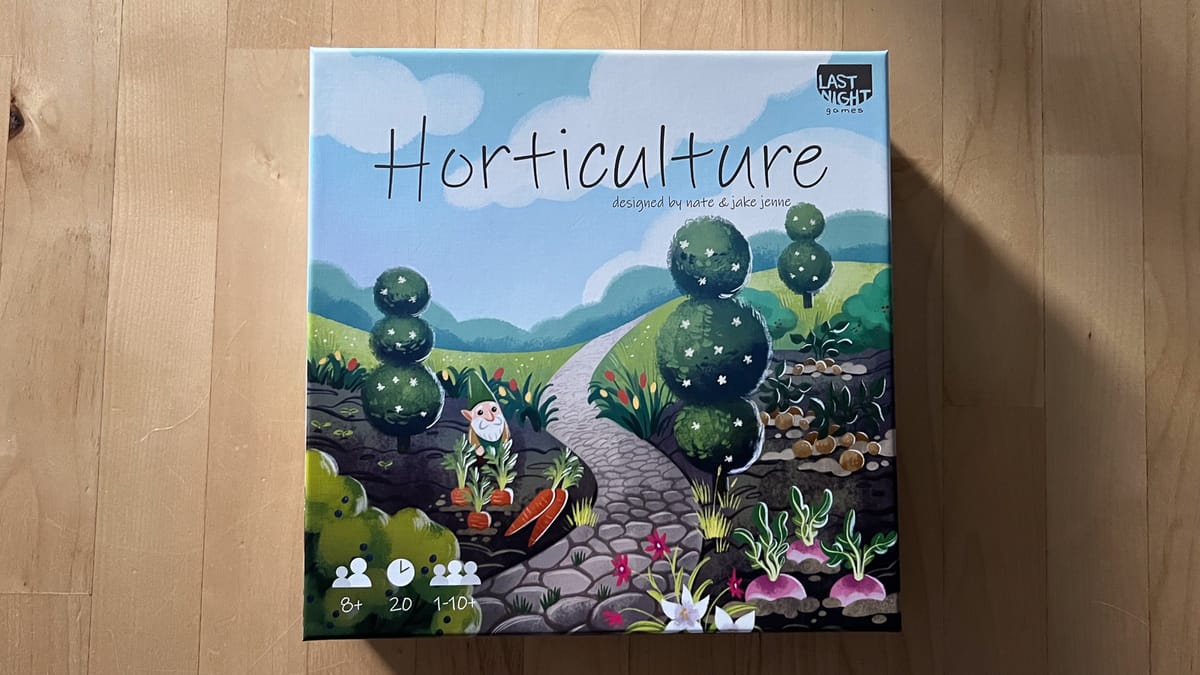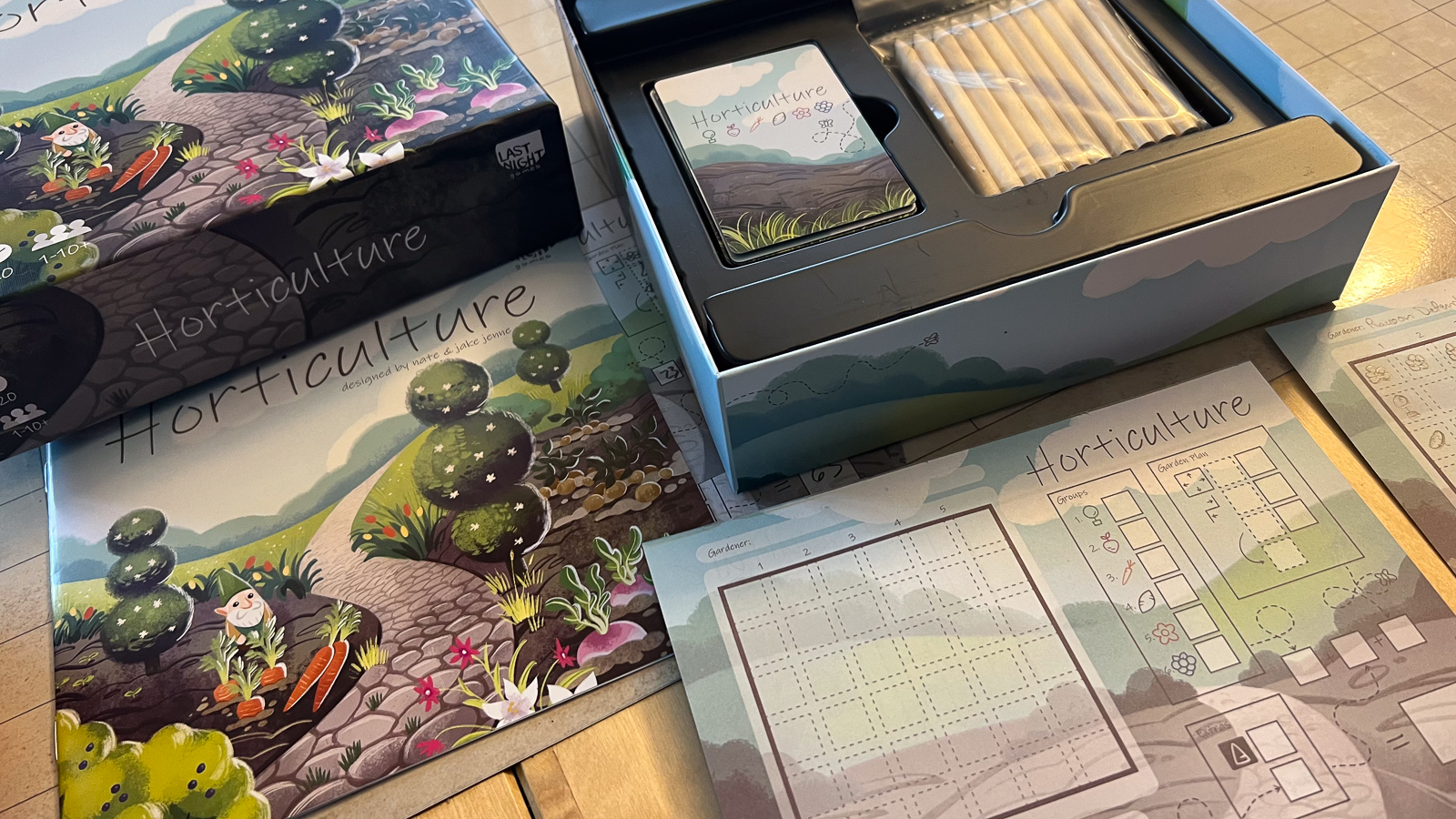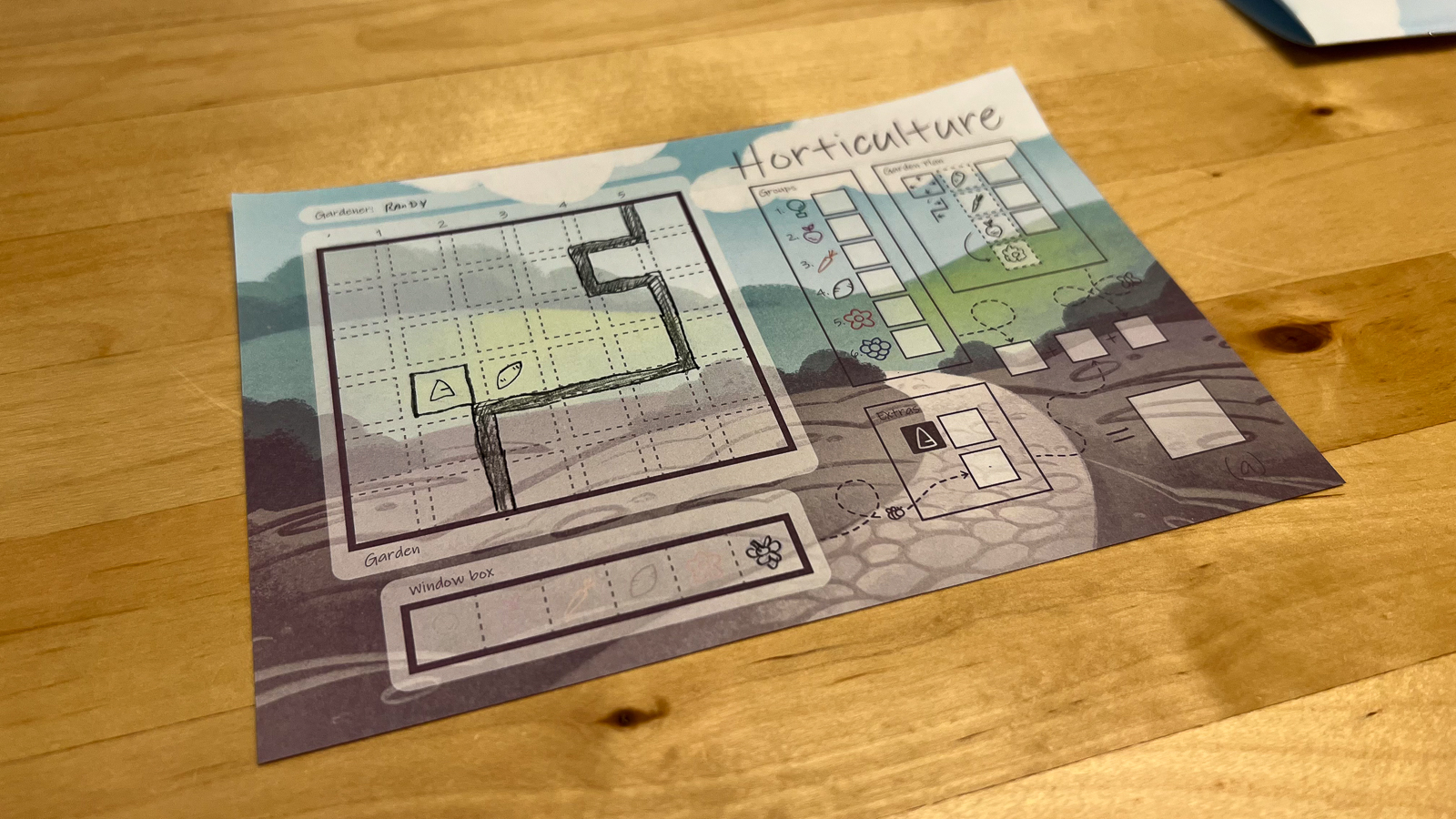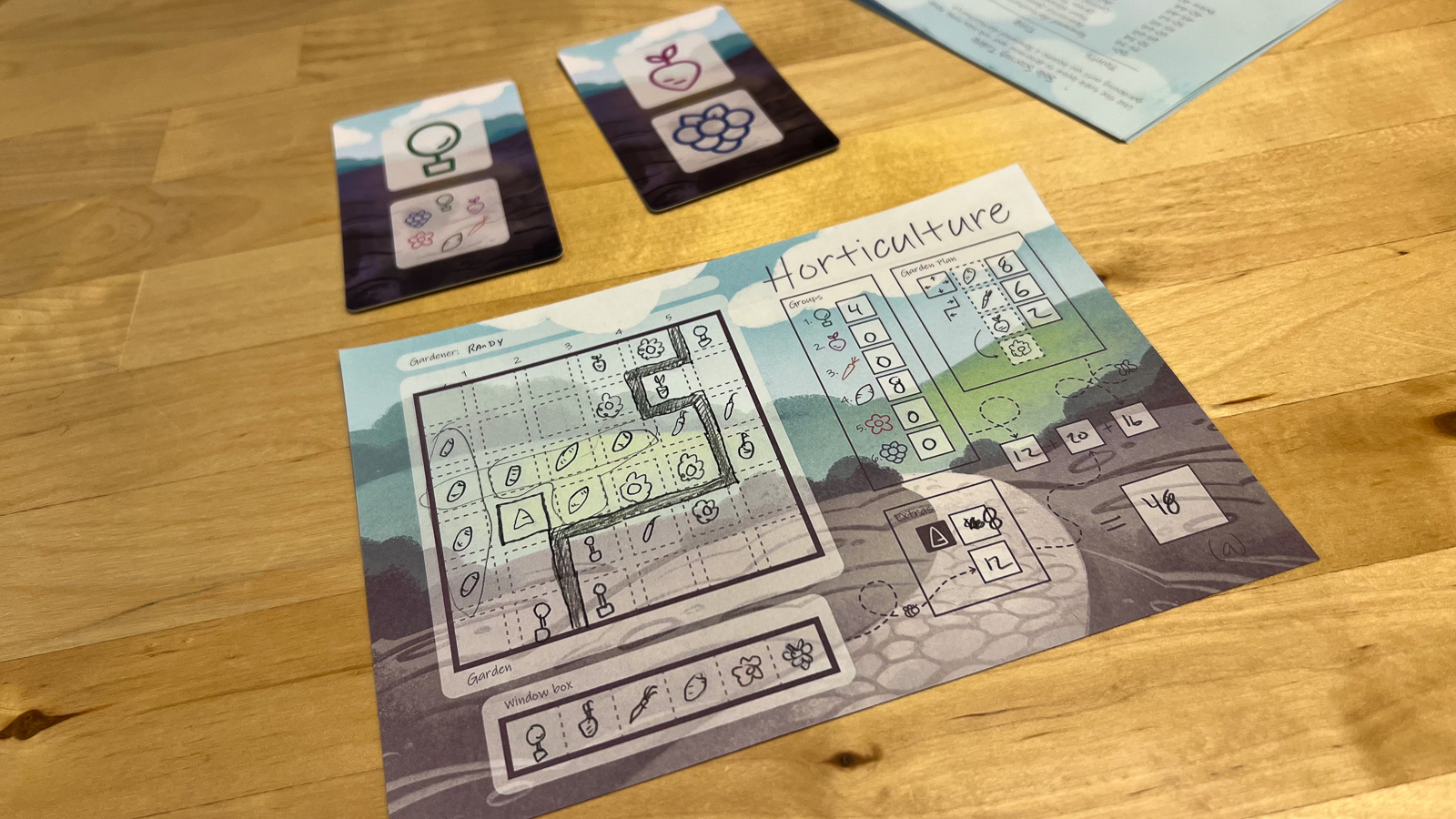
Horticulture, designed by Nate & Jake Jenne and published by Last Night Games, is a flip and write game that challenges gamers to work collaboratively on a garden. In my experiences playing it, I’ve found Horticulture to be an incredibly relaxing yet puzzling experience due to the consistent surprises you end up laying out for yourself.
Let’s dig in.
The packaging is pretty simple, a sturdy, low-profile box houses a pad of 100 double-sided Garden Sheets, 54 Cards detailing the various plants, and some pencils! I do wish they were colored pencils, as this game has a lot of drawing to it, and depending on your table, creativity can flourish.

Horticulture comes with double sided garden sheets, game cards, and pencils!
The Gameplay is also pretty simple. The goal of the game is to collect points through a few different mechanisms, with the primary being groupings of similar plants. There’s also a series of bonuses you achieve over the course of the game, and it ends up being very easy to remember for repeated playthroughs.
At the beginning of the game, players start by making decisions about what plants will exist along the walls of the garden, the path that will cut through the garden, and what plants they would like to place next to each other. These decisions will affect the score at the end of the game. Then, players choose where their garden gnome will live, which adds a 2x bonus to plant groupings around it.
Then, the twist. Players cooperatively design their garden path, meaning that every player has the same path to deal with. In my testing, this can make or break any strategy you may have had in place. If you were planning on putting 6 grapes around the gnome, you might be dealing with a path that completely breaks that strategy. It adds a level of puzzle thinking that I honestly appreciated, and I laughed each time my goals fell apart at the start.

The garden path can greatly challenge players.
After setup is done, a player is chosen to go to the market and draw cards. The cards are simply illustrated, which is a good thing because players will be redrawing these plants on the sheet. The person who draws comes back with topiaries, root vegetables, berries, or flowers. Then players figure out which plant goes where, depending on their individual strategies. Repeat this process until the deck is exhausted, and then players tally up the score.

It takes time to become great at this game but it’s so relaxing, you won’t notice the time going by.
The back of each garden pad offers a more challenging mode, where players need to plot around rocks, and there are solo rules, but the game remains the same.
This game is so relaxing. Typically, games take about 20 minutes, but you can play more quickly if you want…but to be honest, why rush it? I think the point of Horticulture is much like real gardening. Taking time to plan, handling plants with care, and reveling in your successes. Learning how to deal with unexpected situations and figuring out how to maximize what the earth can give you is the point of the game.
Ultimately, Horticulture is one of the most peaceful experiences I’ve had with a game, and I happily recommend it to anyone of any level of experience with board games.
Horticulture
Excellent
Much like real gardening, Horticulture is a relaxing experience that can be puzzling and challenging, Players of all experiences and age ranges will enjoy this chill entry on game nights, guaranteed.
Pros
- Once learned, the rules stick with you
- Games can be played quick or leisurely
- Emphasis on creativity
Cons
- The rule book seems a little complex at times
- Colored pencils would be a benefit
